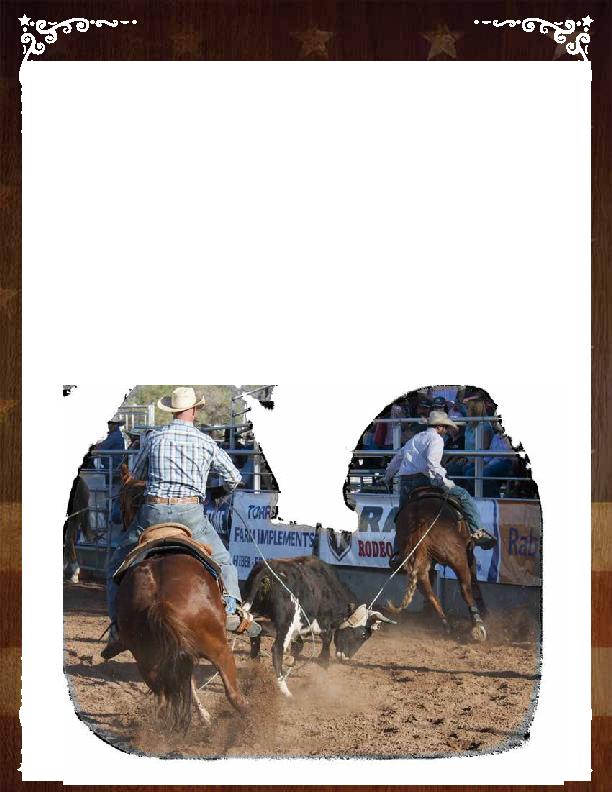
when cowboys needed to treat or brand large steers and the task proved too di cult for one man.
ropers start from the boxes on each side of the chute from which the steer enters the arena. The steer gets a
head start determined by the length of the arena.
pursuit, with the heeler trailing slightly further behind. The ropers are assessed a 10-second penalty if the
header breaks the barrier before the steer completes his head start. Some rodeos use heeler barriers too.
the team is disquali ed. After the header makes his catch, he turns the steer to the left and exposes the
steer's hind legs to the heeler. The heeler then attempts to rope both hind legs. If he catches only one foot,
the team is assessed a ve-second penalty. After the cowboys catch the steer, the clock is stopped when
there is no slack in their ropes and their horses face one another.
horses generally are taller and heavier because they need the power to turn the steer after it is roped.
Heeling horses are quick and agile, enabling them to better follow the steer and react to its moves.